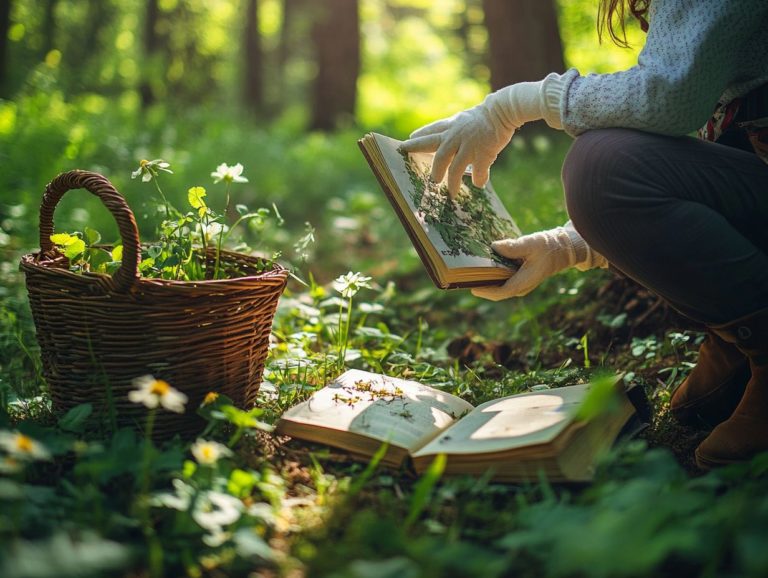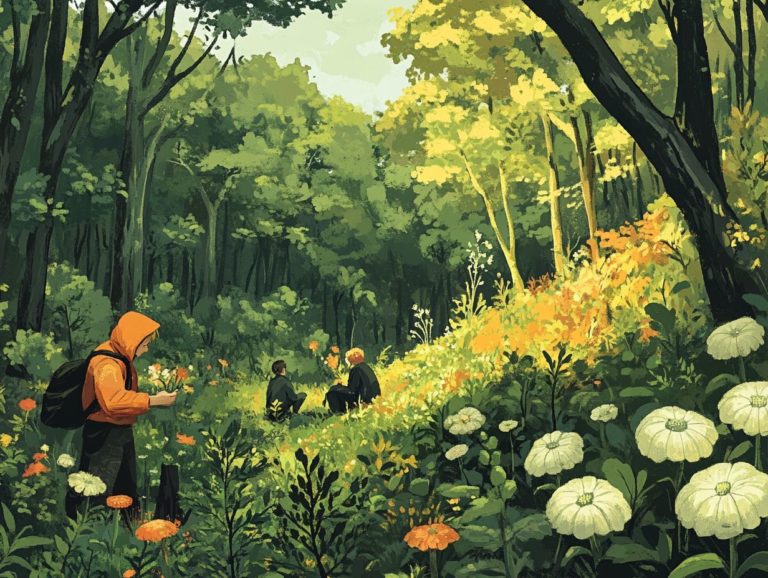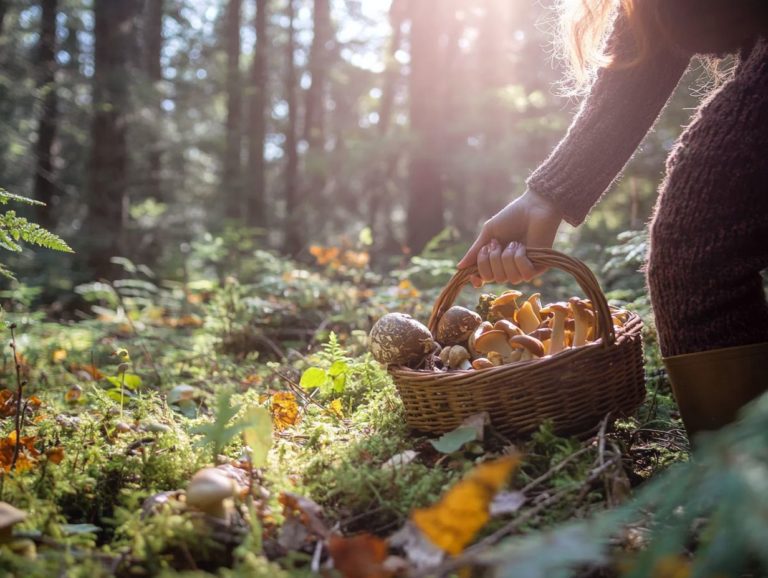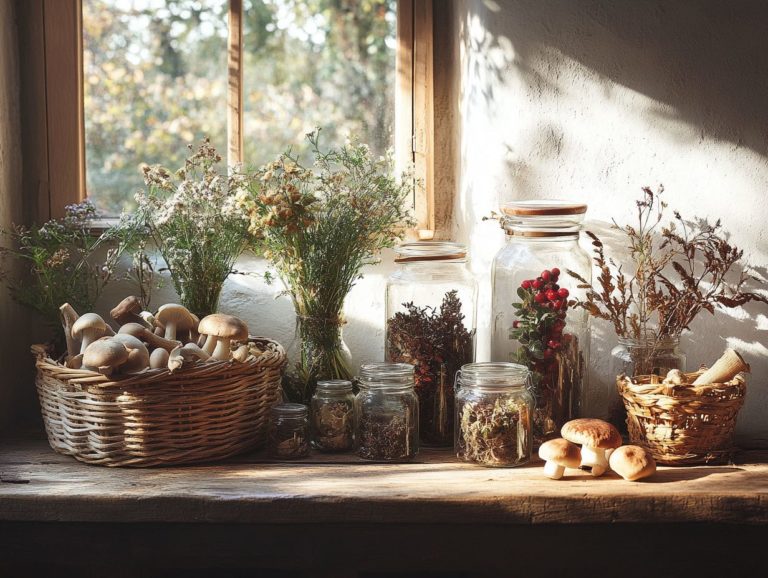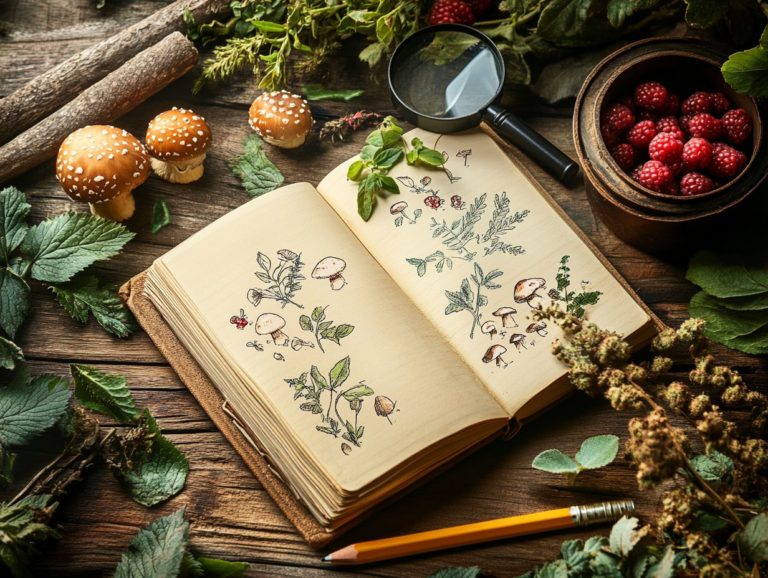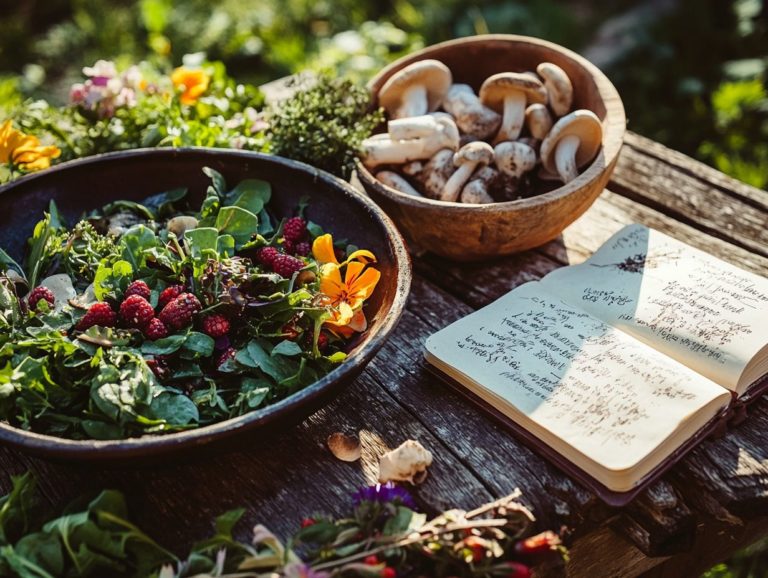How to Teach Kids About Foraging?
Foraging is not merely a method of gathering food; it is a profound journey into nature that imparts valuable life skills.
This article delves into the significance of foraging, particularly for children, emphasizing its benefits for both physical and mental development. You ll discover age-appropriate activities designed to make learning enjoyable, essential safety tips to ensure a secure experience, and innovative ways to weave foraging into your daily life.
Join us to discover the exciting world of foraging and explore how it can elevate your family s adventures!
Contents
- Key Takeaways:
- Benefits of Teaching Kids About Foraging
- How to Get Started with Teaching Kids About Foraging
- Foraging Safety Tips for Kids
- Incorporating Foraging into Everyday Life
- Frequently Asked Questions
- What is foraging and why should I teach it to my kids?
- At what age should I start teaching my kids about foraging?
- How do I get my kids interested in foraging?
- What safety precautions should I take when teaching kids about foraging?
- What are some easy plants for kids to forage?
- How can I incorporate foraging into my child’s education?
Key Takeaways:
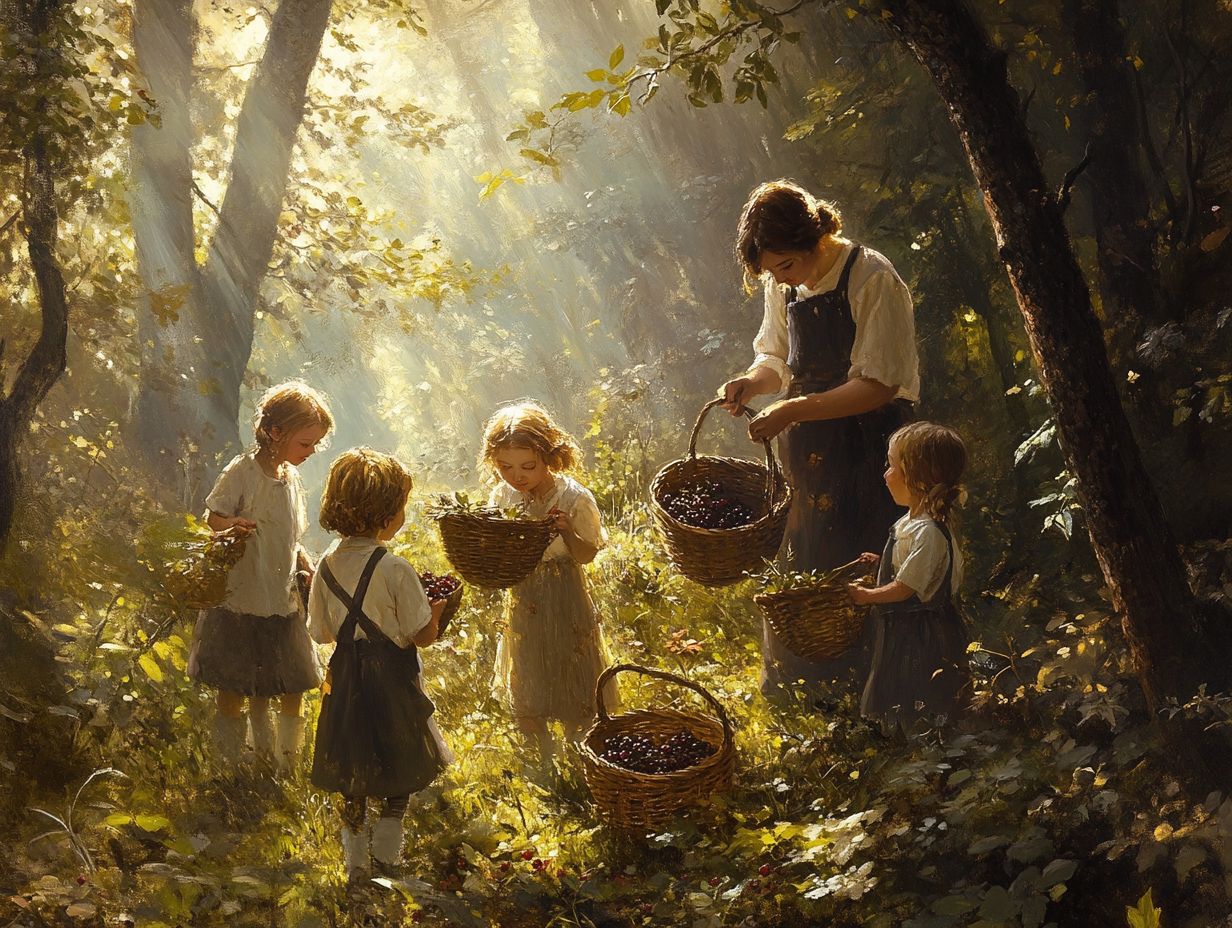
- Teaching kids about foraging can help develop physical and mental skills while fostering a sense of responsibility and connection to nature.
- Incorporating age-appropriate activities ensures children explore foraging safely.
- Foraging provides fun family learning opportunities about edible and poisonous plants.
What is Foraging and Why is it Important?
Foraging is the art of seeking out and gathering wild foods that nature generously offers, including a delightful assortment of edible plants, herbs, and fruits. This ancient practice not only connects you to your environment but also supports a sustainable way of living by making use of the natural resources at your fingertips.
In a world increasingly dominated by processed foods, foraging presents a refreshing alternative that prioritizes nutrition straight from the earth. Embracing local foraging invites you to explore your surroundings, nurturing a deeper appreciation for the ecosystem that sustains you.
Safety is paramount in this endeavor; thus, understanding safe foraging practices is essential to navigate potential hazards and ensure that what you collect is not only edible but also free from contaminants.
By immersing yourself in this rich tradition, you can enjoy the health benefits of fresh, organic ingredients while creating meaningful outdoor experiences with friends and family.
Benefits of Teaching Kids About Foraging
Teaching kids about foraging presents a wealth of benefits, from deepening family bonds to boosting health through nutrition sourced directly from nature. Engaging children in outdoor activities invites them to explore their surroundings while imparting crucial knowledge about edible plants and essential safety guidelines. You can also learn how to use foraging to educate others effectively.
By enrolling kids in foraging classes, families can craft enduring memories, nurture healthy eating habits, and cultivate a lifelong relationship with the natural world. Foraging is an invaluable part of childhood education and personal development.
Physical and Mental Development
Engaging in foraging activities offers you a unique opportunity to foster both physical and mental development in children. As they venture into the great outdoors, they learn to identify various edible plants and herbs, immersing themselves in a world of exploration.
This hands-on approach encourages active movement, enhancing their motor skills as they climb, crouch, and reach for fruits or herbs dangling just out of reach. Navigating different terrains helps them build coordination and balance, turning every step into an adventure.
On the mental front, foraging sharpens their cognitive skills; children learn to distinguish which plants are safe and nutritious, honing their critical thinking and decision-making abilities. By immersing themselves in nature, they cultivate a deep appreciation for the environment, instilling a sense of responsibility for their surroundings.
These foraging adventures elevate outdoor play into rich, holistic learning experiences, transforming time spent outside into invaluable lessons for life.
How to Get Started with Teaching Kids About Foraging
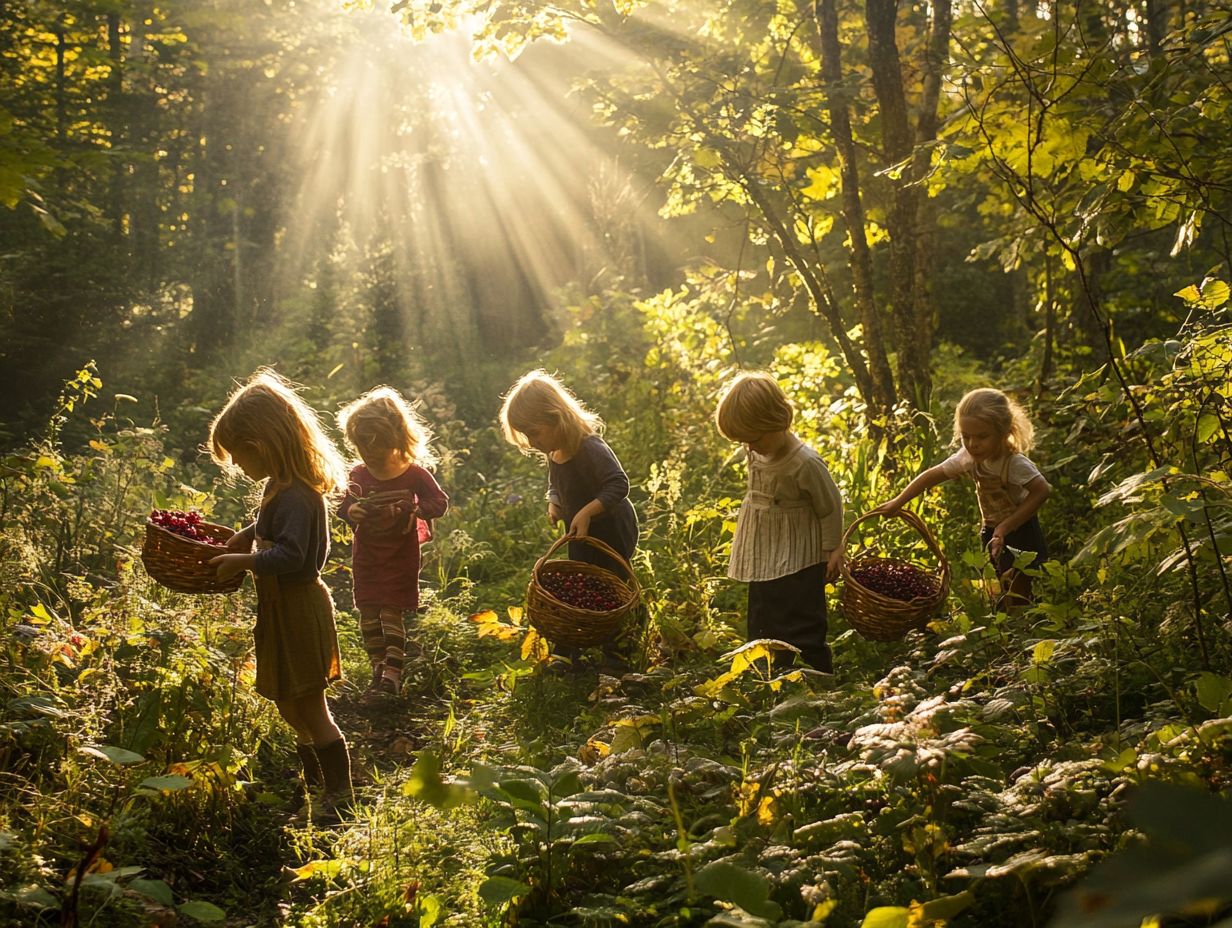
Teaching kids about foraging requires a thoughtful approach. Utilize well-curated resources, such as what beginners should know about foraging, along with clear safety guidelines to ensure a rewarding experience.
Seek out local foraging resources, such as plant identification guides and engaging workshops, to lay a strong foundation for your children’s understanding of edible plants and wild foods.
Connect with experienced foragers to gain invaluable practical knowledge while exploring nature together. This fosters a love for the outdoors and a profound appreciation for the abundance that nature offers.
Age-Appropriate Activities and Lessons
When teaching kids about foraging, provide age-appropriate activities and lessons that resonate with their developmental stage and interests. Younger children can enjoy simple nature crafts and foraging games that introduce them to the world of wild foods, as well as learning how to use foraging as a family activity.
Meanwhile, older kids can dive into cooking sessions, whipping up delectable dishes like dandelion fritters or wild garlic pesto from their foraged treasures. Tailoring activities to various age groups ensures that children stay engaged while learning about nutrition from nature.
Toddlers will likely delight in collecting colorful leaves or flowers, sparking their creativity through crafting projects like nature collages. School-age children can embark on scavenger hunts that teach them plant identification and foster environmental awareness.
As for teens, they can explore more intricate recipes, experimenting with foraged ingredients while gaining insights into the health benefits of what they eat. Incorporating interactive discussions about sustainability using resources wisely for future generations enriches their understanding, transforming every cooking session into an enjoyable yet educational experience.
Foraging Safety Tips for Kids
Foraging is a delightful adventure for children. Prioritize safety guidelines to ensure their well-being in nature.
Teach them to identify plants and tell the difference between edible and poisonous ones. By instilling these safety measures, you enable your children to engage with wild edibles responsibly, enjoying the health benefits of foraging while minimizing risks.
Identifying Edible Plants and Avoiding Poisonous Ones
Identifying edible plants while steering clear of poisonous ones is essential for successful foraging, especially when teaching children. As a parent, guide your kids in recognizing key features of wild edibles like dandelions and chickweed, and help them learn to identify harmful plants such as stinging nettle and lambsquarters.
Integrate practical foraging tips with hands-on plant identification exercises to cultivate a deeper appreciation for the natural world. Equip your children with the knowledge they need to forage safely.
Understanding the distinct visual characteristics of each plant like leaf shape, flower patterns, and growth habits is crucial. Seasonal variations further complicate the picture; plants can look entirely different in spring compared to summer or fall.
Encourage young foragers to take note of a plant’s habitat to help distinguish between safe and harmful species. Organizing foraging adventures as a family builds a deeper connection with nature and teaches the benefits of safe foraging practices, emphasizing proper harvesting methods and the importance of sustainability.
Incorporating Foraging into Everyday Life
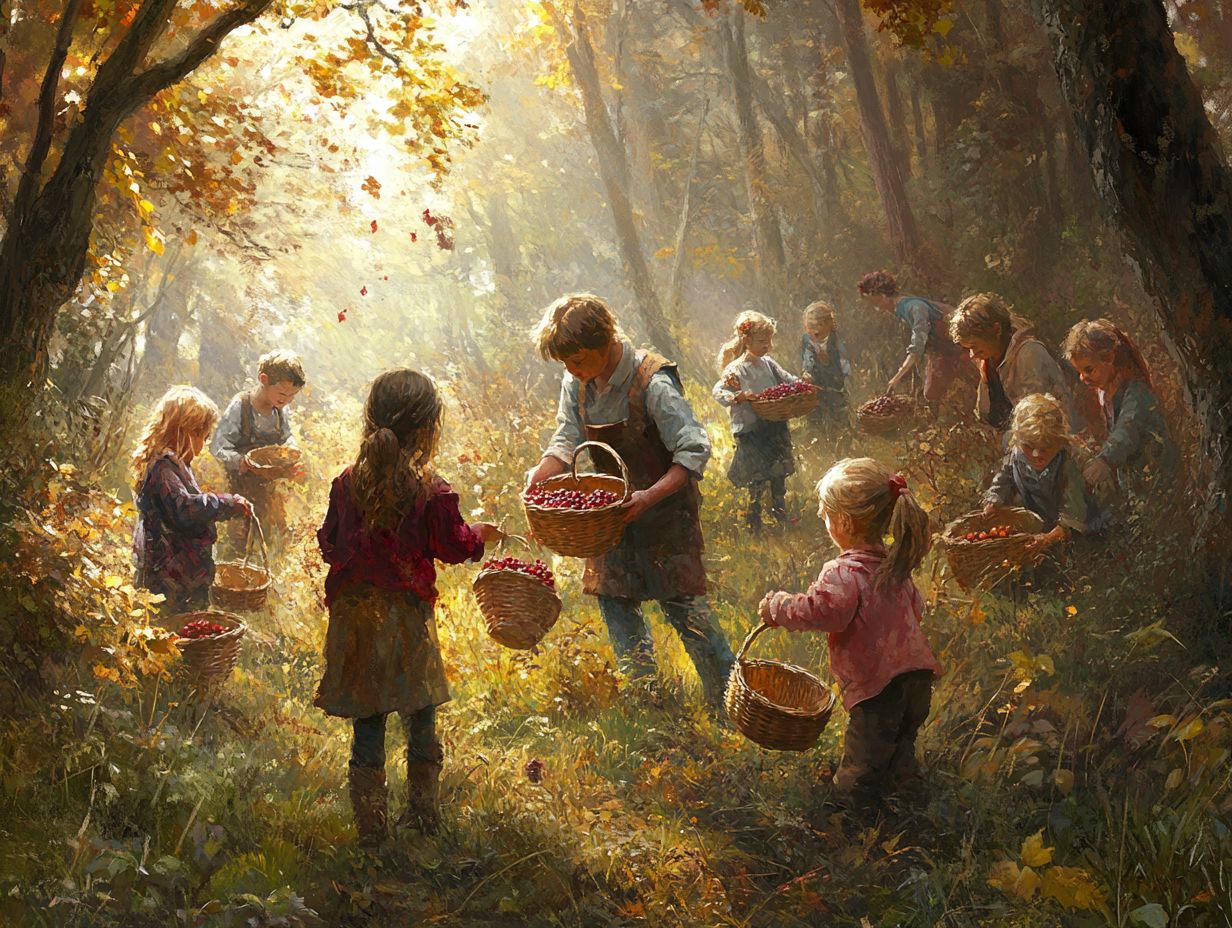
Incorporating foraging into your daily routine can transform your experiences. It nurtures a deep connection between your family and the natural world while providing valuable food education.
Explore seasonal foraging and visit local nature centers to uncover the rich diversity of wild foods in your area. Activities like gathering wild plants and cooking foraged dishes together not only refine your cooking skills but also create a delightful platform for bonding with nature.
Embracing foraging as a regular and rewarding part of family life opens up a world of exploration and connection.
Ways to Make Foraging a Fun and Regular Activity
Transforming foraging into a regular family activity requires a touch of creativity and engagement from everyone. Incorporate wildcrafting games and nature crafts to ignite your children’s curiosity about the natural world and its edible treasures.
Organize regular foraging outings paired with cooking sessions. This allows your family to bond while discovering wild foods and building cooking skills, ultimately cultivating a cherished tradition of exploration and appreciation for nature.
To elevate these adventures, create scavenger hunts that inspire teamwork and a spirit of adventure. Excite your children as they hunt for specific plants or mushrooms, turning the experience into a thrilling quest. Sharing stories about your discoveries deepens connections and sparks imagination.
Craft unique nature journals to document your findings. This enriches the experience and serves as a lasting keepsake from your foraging adventures.
These activities beautifully blend education with play, fostering a sense of wonder about the environment while strengthening family ties through shared outdoor experiences.
Frequently Asked Questions
What is foraging and why should I teach it to my kids?
Foraging is the act of gathering wild plants and other edible items. Teaching kids about the best foraging techniques for families helps them appreciate nature, builds their confidence in identifying and using natural resources, and promotes self-sufficiency.
At what age should I start teaching my kids about foraging?
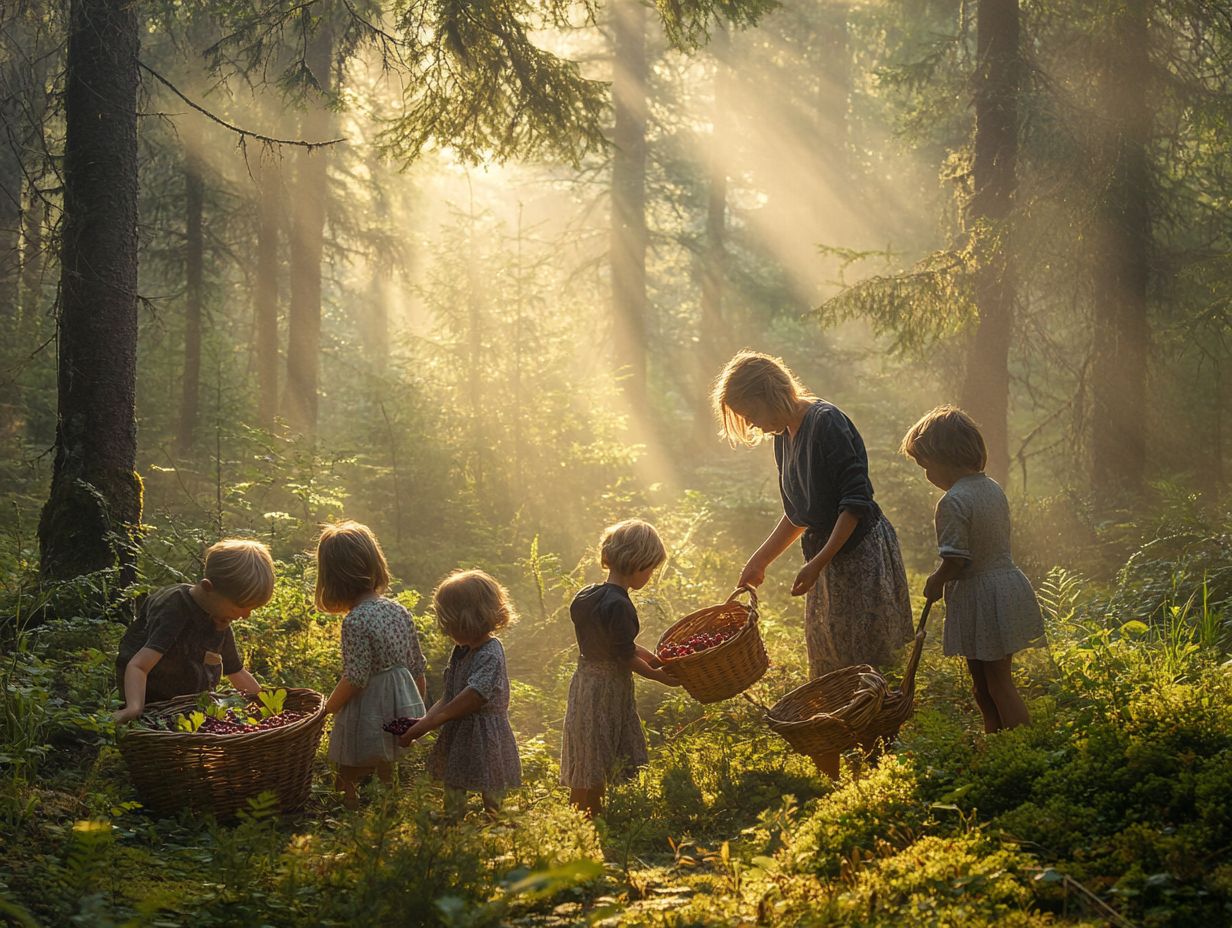
Children as young as 5 or 6 years old can start learning about foraging. Adjust the complexity of lessons and activities based on their age and understanding. Supervise them closely during foraging activities.
How do I get my kids interested in foraging?
Lead by example and show your enthusiasm for foraging. Incorporate it into fun activities like nature walks or scavenger hunts. Involve your kids by letting them choose which plants or items to forage.
What safety precautions should I take when teaching kids about foraging?
Always forage in safe areas and never eat anything unless you are 100% sure it is safe. Teach your kids how to properly identify plants, and remind them to ask for permission before foraging on private property. It s also good to carry a first aid kit and insect repellent.
What are some easy plants for kids to forage?
Some easy and common plants for kids to forage include dandelion, wild blueberries, blackberries, and wild strawberries. These plants are easy to identify and can be used in simple recipes like salads or smoothies.
How can I incorporate foraging into my child’s education?
Foraging can be integrated into various subjects like science, math, and geography. Teach your kids about plant identification, measuring and counting while foraging, and the history and cultural significance of certain plants. To enhance this experience, explore resources that can help with foraging. This makes foraging a fun and educational activity for kids.
Start your foraging journey with your children today to create lasting memories and learning opportunities!

